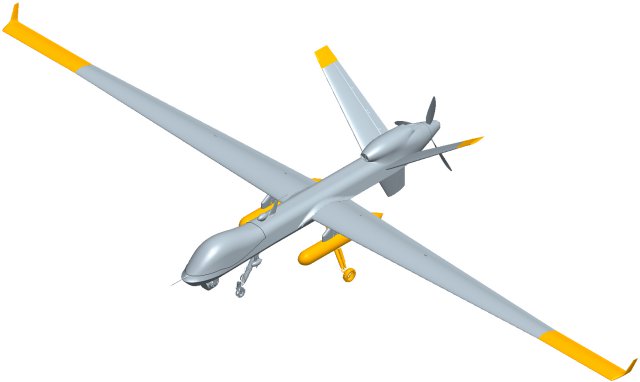Israel assesses eye-in-the-sky platforms
Israel assesses eye-in-the-sky platforms
Israel's military is evaluating two new aerial surveillance units known as tethered hovering platforms.
The devices are carried in small battlefield vehicles or even naval craft and can be put aloft in seconds to provide real-time situational data.
They're a high-tech throwback to the hot air observation balloons used by Union and Confederate forces in the American civil war 150 years ago -- the first eyes in the sky.
Sky Sapience, a start-up company that specializes in hovering machine technology, has unveiled HoverMast, an unmanned platform weighing 22 pounds that can carry a sensor payload of up to 20 pounds.
HoverMast follows the introduction of a similar but larger system by Israel Aerospace Industries known as ETOP -- electric tethered observation platform -- several weeks ago that can also be used for target acquisition in combat.
HoverMast's payload can include electro-optic sensors, laser designators, ground surveillance radar and signals intelligence equipment that can be transmitted electronically to ground forces or base stations.
This makes it suitable for military missions such as border protection, urban security as well as law enforcement missions like crowd control and other civil applications.
HoverMast was developed over the last two years in response to a requirement by Israel's Defense Ministry for a lightweight tethered hovering platform.
It's equipped with four thrusters and a central fan for list and stability and can operate on the move. The whole system is packed in a small container that can be installed on the roof of the vehicle.
At the push of a button, the container opens and HoverMast rises to a height of up to 165 feet in 15 seconds. Deployment is fully automatic.
A cable that also provides power supply and wideband data link tethers the platform to the command vehicle, whose engine provides the power supply. A coaxial counter-rotating ducted fan provides the lift. The four thrusters keep the platform on station and stabilized and can be used to maneuver it.
It is expected to go into full production in late 2012.
"Anyone can use the system and receive immediate surveillance, all with the press of a button," said reserve air force Brig. Gen. Gabriel Shachor, Sky Sapience's chief executive officer who founded the company with engineers Shy Cohen and Ronen Keldar in 2010.
Sky Sapience, which has strategic partnerships with the Defense Ministry research and development agency MAFAT and G-NIUS Ground Systems, has three other projects under development.
G-NIUS produces the multi-purpose unmanned remote control Guardium-LS which was selected for integration with the HoverMast.
The ETOP built by state-owned IAI, flagship of Israel's defense industry, can carry a payload of 44 pounds, more than twice the size of HoverMast's. Its maximum operating height is around 328 feet, double HoverMast's.













